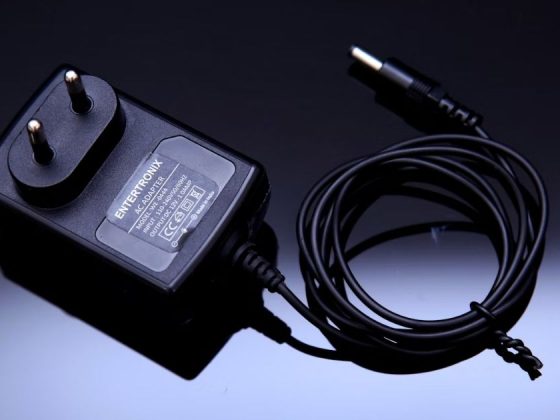Optimizing iPhone battery life is crucial for ensuring the longevity and peak performance of your device. The battery plays a vital role in your iPhone’s overall functionality, and when it is not functioning correctly, it can significantly impact your entire experience. As your iPhone’s battery naturally degrades over time, adopting the proper practices can help maintain its health for a longer period. Here are some expert tips to help you optimize your iPhone battery life and keep it performing at its best.
Top 3 Proven Tips for Optimizing iPhone Battery Life
1. Update to the Latest iOS Version
Keeping your iPhone’s software up to date is one of the easiest and most effective ways to maintain your device’s battery health. Apple regularly releases iOS updates that bring new features while also delivering crucial enhancements to battery management. While it’s easy to overlook the importance of software updates, these updates are key to ensuring your device operates efficiently and that the battery functions optimally.
Bug Fixes and Performance Enhancements
When Apple releases an iOS update, it typically includes a range of bug fixes and performance enhancements. These fixes can address hidden issues that might cause excessive battery drain. For example, a software glitch in a previous version of iOS could cause certain apps to consume more battery than necessary, even when they are not in use. By updating to the latest version of iOS, you can eliminate these bugs and enhance the overall performance of your device, reducing unnecessary strain on the battery.
Additionally, performance optimizations might involve improving how the system manages background processes. Background tasks, such as email syncing, app updates, and notifications, can drain the battery if they are not managed efficiently. Apple may implement changes that ensure these tasks consume less power when not in use, allowing your battery to last longer between charges.
Battery Health Optimizations
Regular iOS updates are key to maintaining your iPhone’s battery health. Apple consistently rolls out features designed to minimize battery wear, such as the Optimized Battery Charging function. This learns your charging habits and ensures your phone only reaches 100% when needed, preventing overcharging during overnight or long charges.
Updates also bring better power management, limiting excessive energy use by apps and processes. Some versions enhance the collaboration between hardware and software to minimize battery strain, while others limit charging after 80% to reduce heat buildup, which can degrade the battery over time.
Battery Health Reports and Notifications
iOS updates frequently enhance the Battery Health feature, offering more accurate readings and insights into your battery’s condition. This feature displays your battery’s maximum capacity and performance capability, enabling you to track its health over time.
With updates, Apple may also introduce notifications alerting you when your battery health declines to a point that could impact performance. For instance, iOS 14 introduced a notification feature that alerts users when their battery health drops significantly. You can check your battery’s status by going to Settings > Battery > Battery Health & Charging to determine whether your battery is functioning optimally or if a replacement is needed.
Security Updates and System Stability
Software updates enhance battery health and improve your iPhone’s security. Security patches protect against malicious apps or processes that could drain your battery by accessing your phone’s resources. Older devices are particularly vulnerable to security risks that can affect both performance and battery life. By keeping your iPhone updated, you ensure it remains safe, indirectly preserving battery health by preventing unauthorized power consumption.
Updates also enhance system stability, reducing the likelihood of app crashes or malfunctions that can unnecessarily drain battery power. A stable system operates more efficiently, further contributing to better battery performance.
By keeping your iPhone’s software up to date, you can fully leverage the latest battery optimizations and improvements. The update process itself is simple, quick, and free of charge, making it a no-brainer for anyone looking to extend their device’s battery life.
2. Avoid Extreme Temperatures
Maintaining your iPhone’s battery health isn’t just about how often you charge it or how long you leave it plugged in; it’s also about how you use it. One of the most crucial yet frequently overlooked factors that can contribute to rapid battery wear is exposure to extreme temperatures. Like any other lithium-ion battery, the one inside your iPhone is particularly sensitive to both heat and cold. Extended exposure to extreme temperatures—either too hot or too cold—can cause irreversible damage to your battery, resulting in reduced capacity and a shorter overall battery life.
The Ideal Temperature Range
For optimal performance and battery longevity, Apple recommends keeping the iPhone within a temperature range of 32°F to 95°F (0°C to 35°C). Operating outside this range can put unnecessary stress on the battery, leading to faster degradation of both the battery and internal components.
Too Hot: High temperatures, such as leaving your phone in a hot car on a sunny day, can damage the internal battery. Excessive heat accelerates chemical reactions within the battery, causing breakdowns in its components. Over time, this results in reduced battery capacity and quicker battery drain.
- Too Cold: Cold temperatures also affect battery performance. Freezing conditions can slow down the movement of lithium ions inside the battery, reducing its ability to hold a charge. While this is usually temporary, prolonged exposure to cold can cause long-term wear on the battery.
How Extreme Temperatures Affect Battery Performance
- Overheating: When an iPhone becomes too hot, its internal battery components may begin to deteriorate more rapidly than usual. In extreme cases, prolonged exposure to heat can cause the battery to swell, leak, or even pose a safety risk. Additionally, the processor and other components inside your phone work harder when exposed to heat, which can result in unnecessary power consumption, leading to even quicker battery drain.
- Example: If you leave your iPhone in direct sunlight or a parked car on a hot day, the temperature inside the car can easily exceed 100°F (38°C), which is well beyond the safe operating temperature range. After repeated exposure, the battery’s capacity will gradually decrease, meaning your phone won’t hold a charge as well, and you may experience more frequent recharging.
- Freezing: Cold temperatures, although not as immediately hazardous as heat, can still significantly impact your iPhone’s battery life. When your phone is exposed to freezing conditions (below 32°F or 0°C), the battery may experience slower charging speeds, quicker battery drain, and overall poor performance. In some cases, your phone may shut down entirely if it detects that the battery temperature is too low, even when used in a cold environment. Although the iPhone will usually return to normal once warmed up, repeated exposure to cold can contribute to the battery’s long-term degradation.
- Example: If you store your iPhone in your jacket pocket during a winter hike, the cold air may reduce its ability to function correctly. You may notice that the battery drains more quickly than usual or that the phone shuts off unexpectedly.
Tips to Avoid Extreme Temperatures
- Store Your iPhone in a Moderate Temperature: When you’re not using your phone, try to store it in a moderate temperature range. Avoid leaving it in direct sunlight, near heating vents, or in places that can trap heat, such as the dashboard of your car. If you plan to leave your phone in a bag or backpack, consider placing it in an insulated case to protect it from extreme temperatures.
- Use Cases to Insulate Your Device. Consider using a protective case that offers some insulation against temperature fluctuations. Some cases are designed to help regulate the temperature of your device, protecting it from both heat and cold. While they won’t entirely shield your phone from extreme temperatures, they can help provide a small layer of protection against rapid temperature shifts.
- Chayou’s Cool, Dry Areas: Avoid charging your iPhone in hot or humid environments. Charging generates heat, and if the climate is already warm, your phone may overheat, causing unnecessary wear on the battery. Charging your phone in a cool, well-ventilated room is the best approach.
- Monitor Temperature Alerts: Your iPhone will display a warning message when the device is too hot or too cold to function correctly. If you receive this warning, it is best to shut down your phone and allow it to cool to a moderate temperature before using it again. Ignoring these warnings can result in severe damage to the battery and device.
3. Enable Optimized Battery Charging
One of the most effective ways to maintain your iPhone’s battery health is to utilize the built-in Optimized Battery Charging feature. This intelligent function is designed to prevent your battery from being constantly charged to 100%, which can be stressful for the battery’s health over time. By reducing the time your iPhone spends at 100% charge, this feature helps extend the overall lifespan of the battery, ensuring it remains in top condition for as long as possible.
How Optimized Battery Charging Works
When enabled, Optimized Battery Charging uses machine learning to understand your daily charging routine and habits. It keeps track of when you typically charge your phone, how long you leave it plugged in, and when you unplug it. Based on this information, the feature makes intelligent decisions about when to charge your phone beyond 80%. Essentially, it delays the final 20% of charging until it predicts you will need it, preventing the phone from staying at full charge for long periods when you’re not actively using it.
For example, if you usually charge your phone overnight, the feature will keep it charged at around 80% until just before you wake up. It then completes the remaining charge, ensuring your iPhone is fully charged when you typically need it, without staying fully charged for an extended period. This prevents wear and tear on the battery, which can occur when it is continuously charged to full capacity.
Why This Matters for Battery Health
Lithium batteries, such as the one in your iPhone, experience strain when kept at a 100% charge for prolonged periods. Maintaining a battery at full charge triggers chemical reactions within the battery that can cause its components to degrade over time. As the battery ages, its ability to hold a charge diminishes, resulting in shorter battery life and more frequent recharging.
By enabling Optimized Battery Charging, you help your phone maintain a more natural charging cycle, which reduces unnecessary stress on the battery and prolongs its ability to retain a charge. This is particularly important for users who charge their phones overnight or keep them plugged in. It’s not just about polished looks—it’s a balance of style and ease, where comfort takes center stage. You’re plugged in for extended periods, as it mitigates the negative impact of overcharging.
To turn it off, follow the same steps as before and toggle the Optimized Battery Charging option off.
Maintaining Long-Term Battery Health for Your iOS Device
Taking care of your iOS device’s battery health is crucial for extending its lifespan and maintaining optimal performance. By following these tips, you can avoid premature battery degradation and ensure your device remains functional and efficient. From managing temperature and charging habits to utilizing settings like Low Power Mode and Optimized Battery Charging, small adjustments to your routine can have a significant impact on your iPhone’s overall battery health. Keep an eye on your battery’s health, and it will continue to serve you well for years to come.





